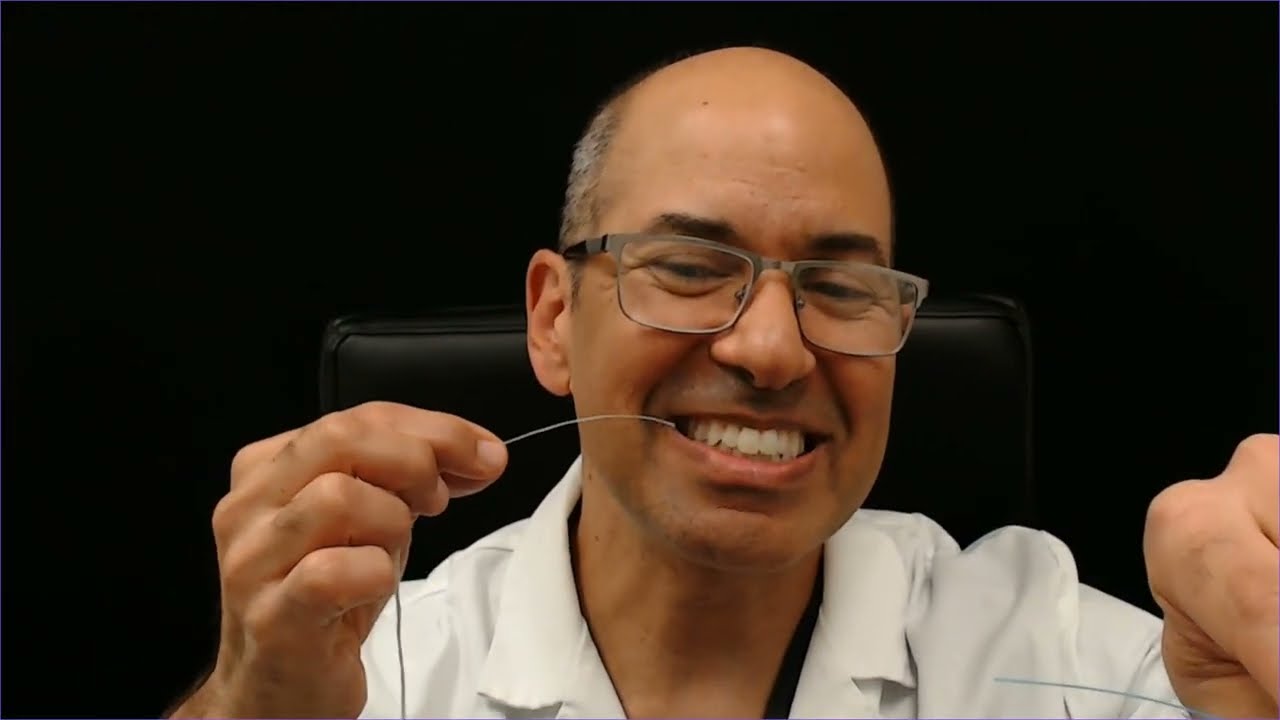Video transcript if you prefer to read: BUT THERE IS A FUNNY PART WHERE I STRUGGLE TO FLOSS MYSELF IN THE VIDEO! 🤣
Today’s topic is one I hear about all the time: “I can’t get under my (full implant) bridge to clean it.” This applies to both dental implant bridges and regular bridges. So, how do you actually clean under a bridge? I have other posts on this topic, but let’s cover the basics here and go over some tools and techniques you’ll want to have on hand.
Options for Cleanings Underneath a Dental Bridge
Bridge Design and Cleanability
First, let’s talk about the design of your bridge. For full-mouth restorations—like All-on-4, zygomatic implants, or any type of bridge—the design should make cleaning easy. Ideally, the bridge should be mostly flat or convex, so there’s no food getting trapped underneath. If the design is good, cleanability is much easier.

The second factor is your dexterity. If you have good hand skills, cleaning will be easier, but there are ways to work around limited dexterity, as well.
Brushing and Waterpicking
Let’s get into your cleaning options. Start with brushing, and I highly recommend using an electric toothbrush. Personally, I prefer the Oral-B spinning heads—not the shaking ones like Sonicare, but the spinning type. Electric toothbrushes are by far the best for this purpose.
After brushing, waterpicking is another helpful option. However, keep in mind that a water pick does not remove everything. Think of it like hosing off your dishes or your car—you still need to scrub to get things truly clean. If you don’t do that, a biofilm (plaque) can build up, which can eventually lead to bone loss around your teeth or implants.
Floss Threaders: The Gold Standard
The best tool you can use is a floss threader. There are plenty of videos online showing how to use these, but here’s the basic idea: a floss threader is a rigid piece that lets you thread floss underneath your bridge. Take a piece of floss, insert about a third of it into the threader, and then guide it between your teeth and under the bridge. Once it’s through, you can floss as normal.
When flossing under a bridge, always use an up-and-down motion—not side to side. Once you’re done, pull the floss out. Floss threaders are reusable and are designed to help you get floss underneath the bridge, which is a crucial step in keeping the area clean.
Interdental Picks and Proper Technique
You can also use interdental picks, which come in different sizes. Use the largest size that fits comfortably. Remember, these picks are not a replacement for floss—they only go over the gum, not under it. Water picks and manual picks are helpful, but nothing beats actual floss.
When using picks, pay attention to the angle. Always insert them at an angle, not straight up or down. It’s often easier to keep your mouth slightly closed and pull your lip down for better access, rather than opening wide.
Rubber Tips and Super Floss
There are also picks on handles and rubber tips, which can help you reach tricky spots. However, floss remains the best tool for cleaning under bridges.
If you’re struggling with dexterity, don’t get discouraged. It takes practice, and it can be frustrating at first. I know it’s tricky—especially when you’re looking in a mirror and everything is reversed—but it’s really important for your oral health.
Super Floss is another great option. It’s a three-in-one product: a regular piece of floss, a thicker yarn section, and a rigid end that acts as a built-in threader. Super Floss is especially useful if you have larger spaces under your bridge. Just thread it through and use an up-and-down motion to clean.
A Secret Weapon: Dental Tweezers
One last tip: dental tweezers. You can find these online for just a few dollars. They’re not the same as regular tweezers, but they work great for threading floss under your bridge, especially if you find it difficult to do with your fingers.
When to Consider a New Bridge
If you find that you still can’t clean under your full implant bridge no matter what you do, it might be a design issue. In some cases, the bridge may need to be replaced to improve cleanability.

